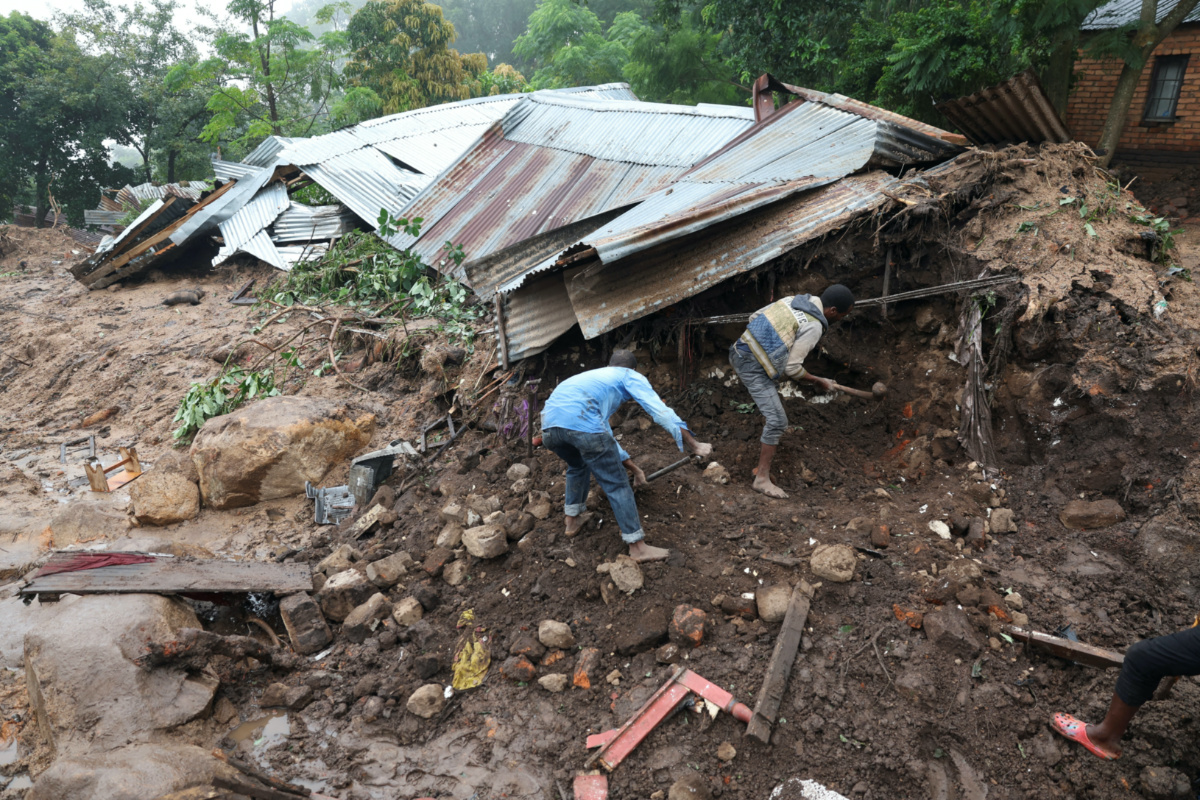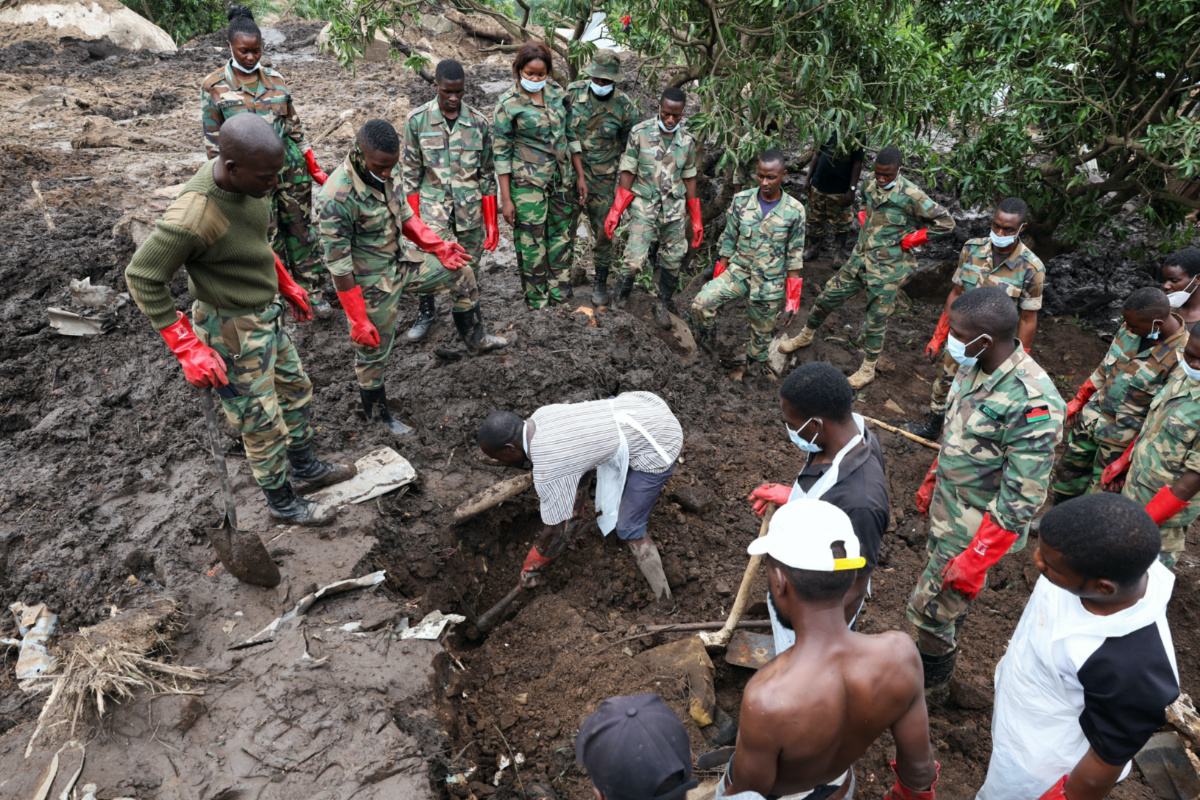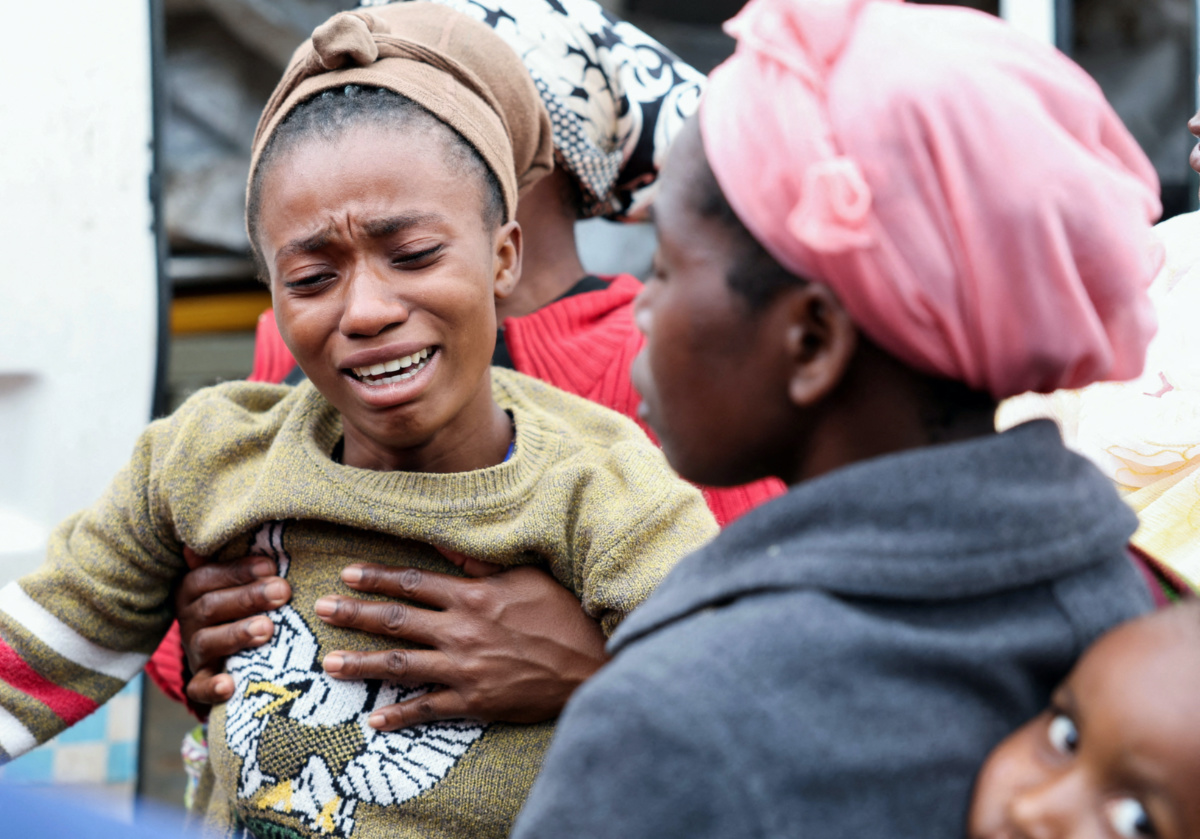
FRANK PHIRI, MANUEL MUCARI, and CARIEN DU PLESSIS, of Reuters, report…
Blantyre, Malawi/Maputo, Mozambique
Reuters
Days before Cyclone Freddy struck Mozambique on 11th March for the second time, cars with loudhailers moved through the streets of the port town of Quelimane warning residents to move to shelters on higher ground with stocks of food and water.
Most people heeded the warnings, knowing from bitter experience the damage such storms could inflict: 600 people had died in Cyclone Idai in 2019.

People dig for their belongings after their home was destroyed during a landslide in Chilobwe, Blantyre, Malawi, on 17th March, 2023. PICTURE: Reuters/Esa Alexander/File photo.
“Local authorities came around my neighbourhood to alert us of the imminent danger. They blew the whistle,” recalled 31-year-old Quelimane resident Amelia Antonio.
Those preparations helped save lives in one of the strongest storms ever to hit Africa.
“Local authorities came around my neighbourhood to alert us of the imminent danger. They blew the whistle.”
– Quelimane resident Amelia Antonio
Mozambique has so far recorded 76 deaths, a relatively low toll compared with previous such disasters.
The storm was far more deadly in neighbouring Malawi, where at least 447 were killed as Freddy tore through the country’s southern tip and inundated the main commercial hub of Blantyre.
There, warnings were inconsistent and often unheeded by residents, many of whom told Reuters they did not know where to go if they did leave their homes.
Mozambique and Malawi are among the poorest eight per cent of countries in the world, according to United Nations data. Over half the population in each country live below the poverty line.
The contrast between what happened in the two southern African nations holds lessons for a world where global warming and population growth have produced burgeoning shanty towns vulnerable to the destructive storms that climate change fuels.
As these storms get stronger, sophisticated warning systems of the sort Mozambique now uses will be required, and swollen cities like Blantyre will have to address the scourge of unplanned slums that rapid urbanisation is creating.

Locals dig for bodies of victims with the help of the Malawi Army in Chimwankhunda township after the aftermath of Tropical Cyclone Freddy in Blantyre, Malawi, on 17th March, 2023. PICTURE: Reuters/Esa Alexander
“What remains of my house is just sticks standing,” Antonio told Reuters in a telephone interview on Thursday. “If I’d been there, I don’t know what would have happened.”
She avoided physical harm thanks to a community-based early warning system in Mozambique, which delivers text messages and announcements on local radio and TV. She was instructed to seek shelter at a local school, where she is still sleeping.
“It is a very structured [warning] system…down to village level,” said Myrta Kaulard, United Nations resident coordinator for Mozambique. “People had to move to the shelters and this…saved a lot of lives.”
In Malawi, too, warnings were sounded as the storm moved inland. But a lot of people did not get them, including Madalo Makawa, a resident of Chilobwe, a densely populated township of Blantyre that was one of the hardest hit by the storm.
“We just saw water and rocks coming down the mountains and we started running,” she said. “People were shouting for help, others were climbing trees.”
Others, like Yohane Simbi, said they were not told where to seek shelter, and so many stayed home.
Chilobwe lies below a mountain with thousands of makeshift shelters, often mud structures with tin roofs that were flattened by mudslides and falling rocks. Between two-thirds and three-quarters of Malawians in the country’s four cities live in informal houses, UN Habitat data from 2020 shows.
Simbi’s house was partially destroyed, but he survived.
“Malawi…normally floods on lower ground,” Felix Washon from the Malawi Red Cross Society told Reuters from Blantyre. This means anyone in the hills thought they were safe despite radio, TV and social media messages warning them of the storm.
“During the mudslides…water broke away from the mountains,” he said. “This has never happened in recent times.”
As he visited the area of Blantyre hit by the storm, Natural Resources Minister Michael Usi described it as a “national tragedy”, but said people had been warned to relocate.
Officials in Malawi’s disaster management affairs department did not immediately respond to queries on evacuation orders and whether shelters were set up before the storm hit.

A woman reacts after a body was exhumed of the mud by locals and Malawi’s Army in Chimwankhunda township, in the aftermath of Tropical Cyclone Freddy in Blantyre, Malawi, on 17th March, 2023. PICTURE: Reuters/Esa Alexander
Scientists say climate change driven by the burning of fossil fuels is making tropical storms stronger.
The ocean has absorbed much of the warming caused by heat-trapping gases. This additional heat can fuel a storm’s intensity and power stronger winds. In the case of Freddy, this extra energy allowed the storm to pick up strength again and circle back to strike again.
At the same time, rapid population growth in the developing world has pushed impoverished rural folk to seek opportunities in cities, putting pressure on housing in places like Blantyre, which has a population of about a million.
“People are coming from the rural areas…to find jobs, but when they don’t get jobs, they don’t go back, they settle in the fragile areas,” said Costly Chanza, director of town planning and estates services at the Blantyre City Council.
We rely on our readers to fund Sight's work - become a financial supporter today!
For more information, head to our Subscriber's page.
Much of the construction in the hilly areas around Blantyre flouts planning regulations, he added, but efforts to move people elsewhere have failed as alternative plots were too far away from employment, schools and hospitals.
Court orders blocking relocations have also thwarted the city’s efforts, Chanza said. He did not provide specific figures of how many people need to be relocated.
Deforestation – often to make charcoal in places with no electricity – added to the disaster, as it loosens soil, creating the right conditions for mudslides, Chanza said.
In addition, weak building materials like mud and iron sheets made houses more prone to collapse, said Estere Tsoka, emergency specialist at UN children’s agency UNICEF in Malawi.
– With ELDSON CHAGARA in Blantyre and OLIVIA KUMWENDA-MTAMBO in Johannesburg, South Africa.






